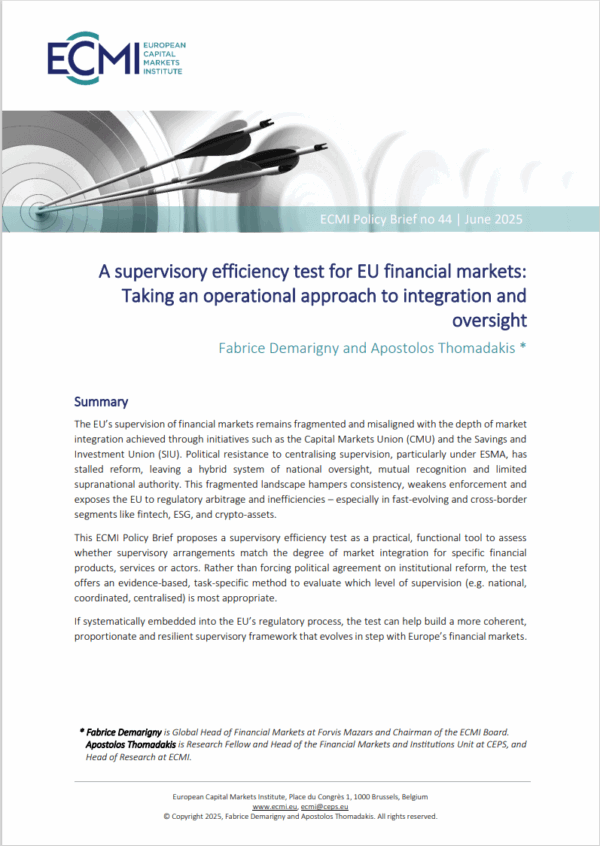The journal Intereconomics, published bi-monthly by CEPS and the Leibniz Information Centre for Economics (ZBW), features articles dealing with economic and social policy issues affecting Europe. Each issue contains a Forum section offering an in-depth exploration of a selected topic. All contributions to the Forum section in each issue, as well as the Editorial, are available for free downloading from the CEPS website at the links below (for full content, see www.intereconomics.eu).
Abstarct: The EU’s stagnation on many innovation indicators led to a number of efforts to spur a turnaround. One of most visible projects has been the Horizon 2020 strategy, which devotes unprecedented levels of funding to the promotion of R&D and innovation. But does this strategy address the right issues to promote innovation? Is Horizon 2020 right to ignore geographical considerations when allocating funding? What policy instruments does Horizon 2020 recommend, and has it led to novel strategies being employed, beyond the increase in R&D funding? What steps are individual countries taking? Most importantly, what impact is Horizon 2020 actually having on innovation in the EU?
Authors: Vassilis Monastiriotis, Reinhilde Veugelers, Michele Cincera, Rainer Frietsch, Torben Schubert, Christian Rammer, Anita Pelle, Andrea Renda, Jos Leijten, Carlos Montalvo, Heather Boushey.
Editorial: The End of Austerity?
By Vassilis Monastiriotis
Forum: The Impact of Horizon 2020 on Innovation in Europe
By Reinhilde Veugelers, Michele Cincera, Rainer Frietsch, Torben Schubert, Christian Rammer, Anita Pelle, Andrea Renda, Jos Leijten, Carlos Montalvo.
Letter from America: Bringing Inequality Back In
By Heather Boushey
Looking at the U.S. economy over the past half-century, what jumps out is the sustained rise in inequality in wages, incomes and wealth, especially those at the top pulling away from the rest of us. We also see that higher inequality is associated with slower income growth. From 1947 to 1979, family incomes grew at about the same pace across the income spectrum, about two percent per year. But in the period 1979-2007, just before the economic crisis, families in the bottom quintile experienced essentially no income growth, while families in higher quintiles saw progressively greater annual income growth. But all quintiles – even the top one – saw their wages grow more slowly than two percent. It is only those at the very top of the income spectrum who saw higher rates of income growth.












